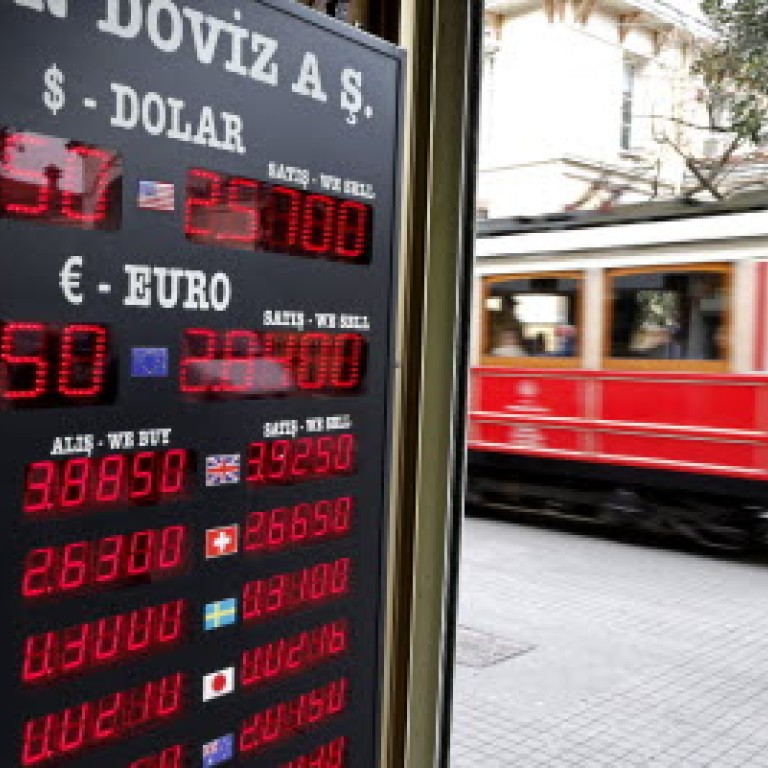
Are emerging markets about to suffer another ‘taper tantrum’?
The whiff of another “taper tantrum” has been in the air for some time.
In May 2013, the US Federal Reserve’s decision to begin scaling back, or “tapering”, its programme of quantitative easing (QE) triggered a dramatic sell-off in so-called “risk assets”, with emerging markets (EMs) at the sharp end of the deterioration in investor sentiment.
In a speech at the Reserve Bank of India (RBI) on Tuesday, Christine Lagarde, the head of the International Monetary Fund (IMF), warned that the financial turmoil in the summer of 2013 - which contributed to some US$27 billion in outflows from EM equity funds for the whole year compared with inflows of US$52 billion in 2012, according to JP Morgan - might be about to repeat itself as the Fed prepares to raise interest rates sometime later this year.
The timing of [US] interest rate lift-off and the pace of subsequent rate increases can still surprise markets
Referring to the “taper tantrum”, Lagarde said she feared “this may not be a one-off episode”.
“The timing of [US] interest rate lift-off and the pace of subsequent rate increases can still surprise markets,” she said.
For sure, there are signs that investors are on edge.
Since the beginning of this month, EM stocks have fallen more than 4 per cent, dragged down by particularly sharp declines in Latin American and East European equities.
Moreover, US$8.3 billion has flowed out of EM equity funds this year while the recent streak of inflows into EM bond funds has come to an end, with outflows of nearly US$600 million last week, according to JP Morgan. The spread of EM dollar-denominated debt over benchmark US Treasuries has risen more than 30 basis points this year to 383 basis points.
Still, the average yield on the bonds in JP Morgan’s benchmark EM local currency debt index remains below 6.5 per cent, compared with more than 7 per cent in early February last year when EM assets came under severe strain.
While sentiment towards EMs has clearly deteriorated - and may worsen further if bond markets suddenly start to price in a more hawkish Fed - the timing and pace of a tightening in US monetary policy are still shrouded in uncertainty.
On Wednesday, Fed chairwoman Janet Yellen made it clear that while America’s central bank had decided to drop its pledge to be “patient” before raising rates, that did not mean it had become “impatient” in deciding when to tighten policy - not least given that the Fed opted to lower its forecasts for growth and inflation due to the recent soft patch of US economic data.
EM equities rose nearly 1 per cent on Wednesday following Yellen’s dovish comments.
This suggests that sentiment towards developing economies is volatile as opposed to pervasively bearish.
One of the reasons for this is that two of the world’s other main central banks - the European Central Bank (ECB) and the Bank of Japan - are moving in the opposite direction to the Fed by undertaking aggressive QE. The ultra-accommodative policies of the ECB, whose €60 billion-a-month bond-buying programme officially got under way on March 9, are underpinning sentiment towards emerging European debt markets.
The 10-year bond yield of Hungary, one of the more vulnerable Central and East European markets because of its high levels of public and private debt, stands at just 3.7 per cent - roughly 200 basis points lower than a year ago. Poland’s two-year bond yield, meanwhile, stands at just 1.6 per cent - a near-historic low.
Yet this begs the question whether EM risk is being priced accurately.
The good news is that investors are punishing developing countries with large external imbalances and/or whose policy regimes lack credibility.
The Turkish lira has fallen nearly 13 per cent against the US dollar since the middle of January mostly because of concerns about the politicisation of monetary policy in Turkey.
Markets are also rewarding countries where the prospects for reform appear brighter and whose central banks are credible. The Indian rupee has even strengthened 1 per cent this year mainly because of expectations that Prime Minister Narendra Modi’s reform drive will prove successful.
Differentiation has been the watchword for EMs for some time. While another “taper tantrum” can’t be ruled out, it’s more likely that any flare-ups will be worse in some countries than in others.
Nicholas Spiro is managing director of Spiro Sovereign Strategy

